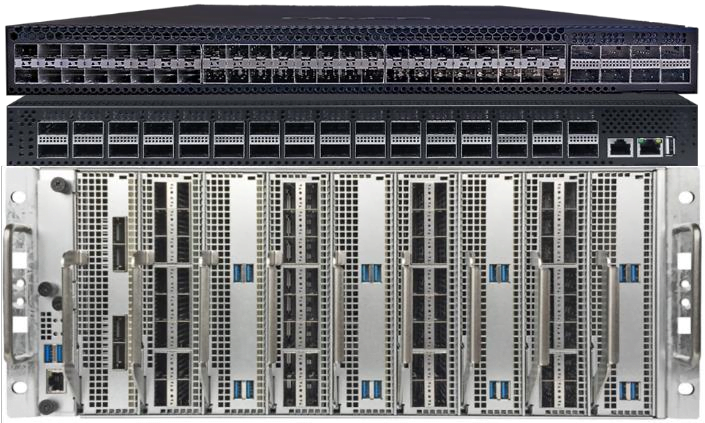Why VXLAN is Critical for Data Centers?- Asterfusion SONiC VXLAN Switch Solution
written by Asterfuison
Table of Contents
VxLAN (Virtual eXtensible Local Area Network) is essentially a tunnel encapsulation technology. It uses the common tactic of the TCP/IP stack – encapsulation/decapsulation technology, which encapsulates Layer2 Ethernet frames into Layer4 UDP datagrams and then transmitted in the Layer3 network. The effect is like Layer 2 Ethernet frames being transmitted in one broadcast domain, which actually crossing the Layer3 network , but does not perceive the L3 network’s presence.
With the development of network technology, cloud computing has become a new trend in IT construction , in terms of its advantages in system utilization, low management costs, and flexibility/scalability.As one of the core technologies of cloud computing – server virtualization has been applied widely , which greatly enhances the computing density of the data centers. At the same time, the demand for unlimited migration of VMS on layer 2 networks is becoming increasingly urgent . In order to cope with the challenge of network scale and workload mobility, VXLAN is born and used as one of main overlay network technologies. In this article, let’s explore What is VXLAN and VXLAN switches.

What is VXLAN
VxLAN is the abbreviation of Virtual eXtensible Local Area Network. As it can be seen from the name, this is an extension protocol of VLAN.
VxLAN is essentially a tunnel encapsulation technology. It uses the common tactic of the TCP/IP stack – encapsulation/decapsulation technology, which encapsulates Layer2 Ethernet frames into Layer4 UDP datagrams and then transmitted in the Layer3 network. The effect is like Layer 2 Ethernet frames being transmitted in one broadcast domain, which actually crossing the Layer3 network , but does not perceive the L3 network’s presence.
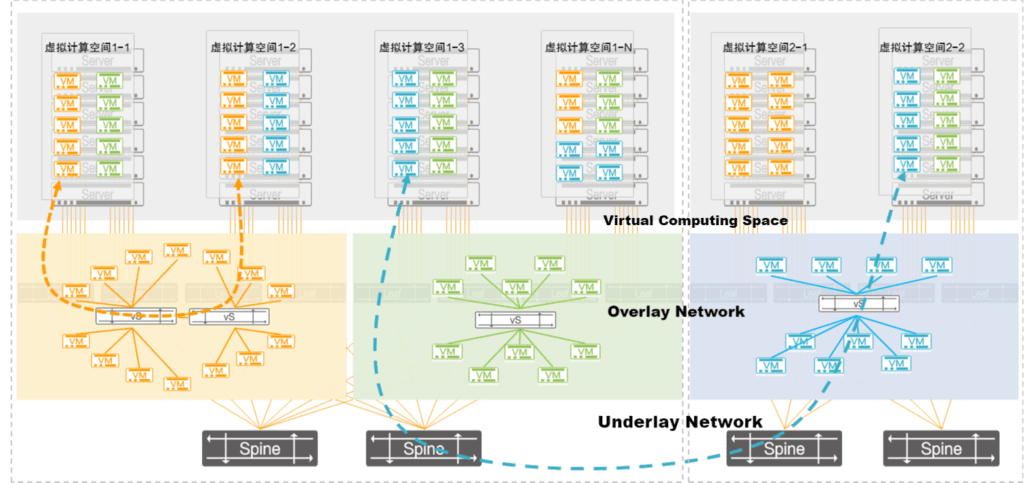
What is the Difference of VxLAN vs. VLAN
Although VXLAN is an extension protocol from VLAN, VXLAN is very different from VLAN in establishing virtual tunnels.
- As a traditional network segment technology, the number of VLANs is only about 4,000, which cannot meet the isolation requirements between tenants in large Layer 2 networks. Furthermore, the Layer 2 scope of VLANs is generally small and fixed, and cannot support large-scale dynamic migration of virtual machines.
- However, VXLAN perfectly makes up for the above shortcomings of VLAN. On the one hand, through the 24-bit VNI field in VXLAN, it provides the identification capability of up to 16M tenants. On the other hand, VXLAN essentially builds a virtual tunnel between the two switches that traverses the basic IP network of the data center , virtualizing the basic IP network into a giant “Layer 2 switch” to meet the needs of massive dynamic VM migration.

What’s VxLAN Advantages and Why VXlan is Necessary for Data Centers?
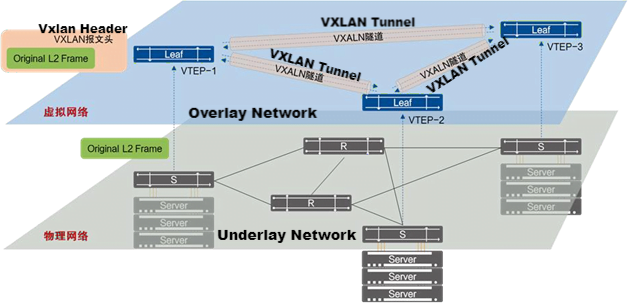
VXLAN is an overlay technology that allows you to segment network (just like a VLAN), but also addresses VLAN extension limitations and offers benefits that VLANs cannot provide. Some of the key benefits of using VXLAN include:
- The layer-2 network can be extended on a layer-3 network, and the network architecture can be extended on a large scale. Vm migration is no longer limited to a small local range.
- Vxlan expands the number of segmentation identifiers from 12bit to 24bit, support up to 16M user identifiers, fully meet the current and future multi-tenant network segmentation capabilities of data centers.
- Segmented and multi-tenant: VxLAN offers high level of security over segmented networks. VxLAN traffic is limited to VNI and therefore it’s isolated. This segmentation also contributes to a multi-tenant architecture where a single infrastructure must be shared.
- Layer 2 networking is simplified. VXlan simplifies networking through reducing the requrements for Layer 2 Spanning Tree, Trunking.
- The expansion of the Layer 2 network is realized In the Layer 3 network, the switch only needs to maintain a local MAC address table, which greatly reduces the network load requirement for MAC address table entries.
- IP Mobility is available : A virtual machine can be migrated from a host in a subnet to another host in another subnet without changing the IP address.
- Hardware support: While it’s more usual to run VxLAN in software, several hardware platforms implement it on hardware through ASICs. For example is the Asterfusion low-latency cloud switch based on Teralynx.
Basic Concept of VXLAN Overlay Network
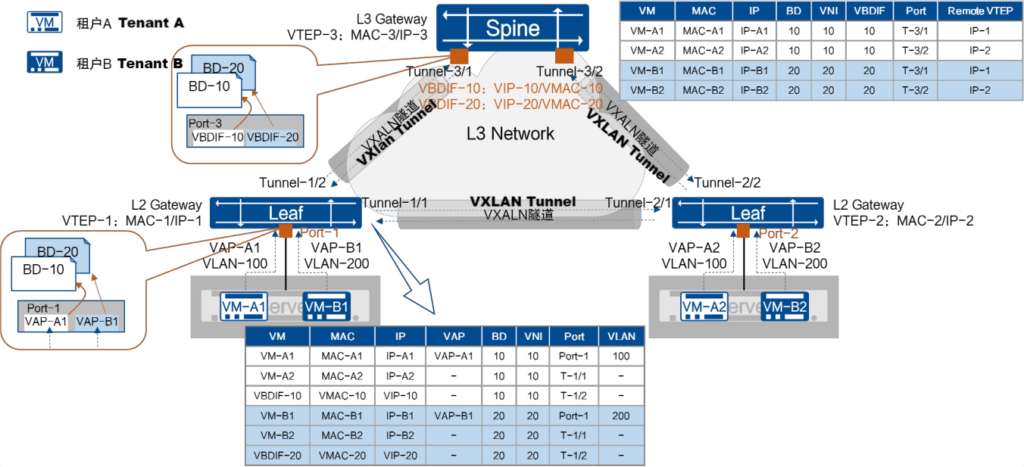
The above picture shows the achitecture of the VXLAN network. The basic concept is as follows:
- VNI(VXLAN Network Identifier)
VXLAN uses 24 bits to identify the layer 2 network segmentation, and each VNI identifies a VXLAN subnet(similar to VLAN ID ),the corresponding relationship between each VXLAN ID and the virtual machine’s VLAN ID can be 1:1 or 1:N.
- VTEP(VXLAN Tunnel End Point)
VTEP is the edge device of VXLAN, and VXLAN processing is performed on VTEP:Identify which VXLAN an Ethernet frame belongs to、forwarding data frames based on VXLAN, encapsulate/decapsulate VXLAN packets, etc. A VTEP can be a network device entity or server’s vSwitch
- VAP(Virtual Access Point)
The VXLAN service access point is unified as a Layer 2 sub-interface on the VTEP, which is used to access data packets. It can identify which BD domain a VXLAN data packet belongs to based on the VLAN or packet encapsulation type.
- VXLAN Tunnel
The source IP address in the VXLAN packet header is the VTEP address of this node, and the destination IP address is the VTEP address of the peer node. A pair of VTEP addresses corresponds to a VXLAN tunnel. A VXLAN tunnel is a logical tunnel that completes the transmission of VXLAN encapsulated packets between two VTEPs.
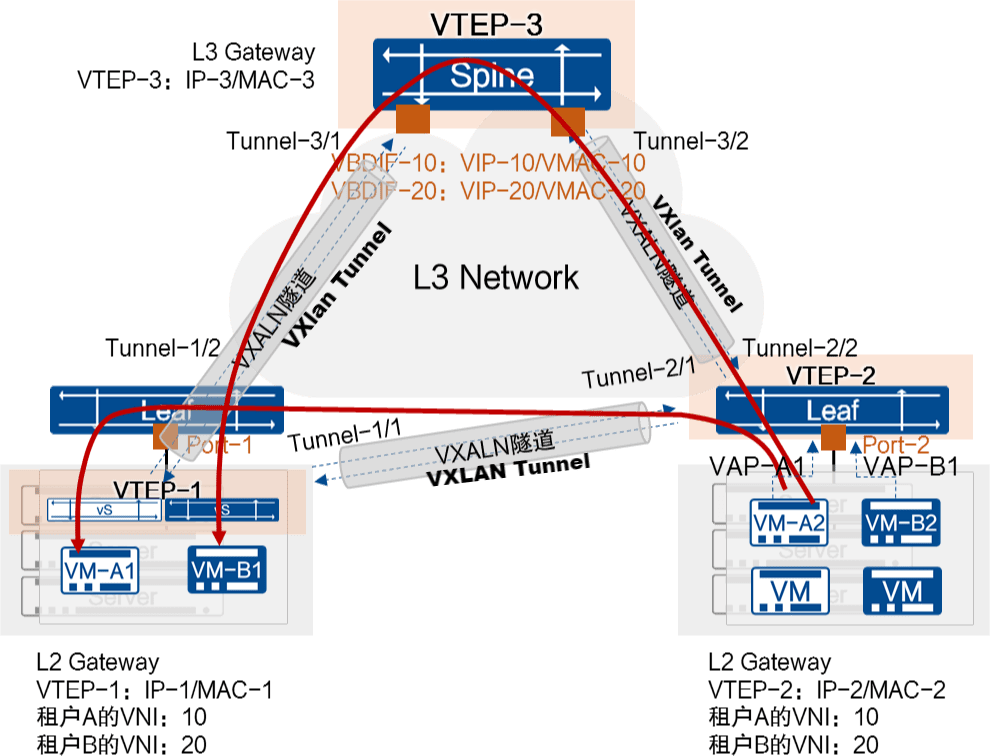
- BD(Bridge Domains)
In the traditional network, using VLAN to divide the broadcast domain . In VXLAN network, the broadcast domain is divided by BD .Map the VNI to the broadcast domain BD in 1:1 manner. A BD represents a broadcast domain. VMs in the same BD can communicate at Layer 2. VMs in different BDs can communicate with each other by configuring VBDIF interfaces on the VXLAN Layer 3 gateway.
- VXLAN Gateway
Similar to vlan, vxlan gateways must be relied upon for communication between different vxlan VNI or between vxlan and non-vxlan networks. VXLAN gateways are divided into Layer 2 gateways and Layer 3 gateways.
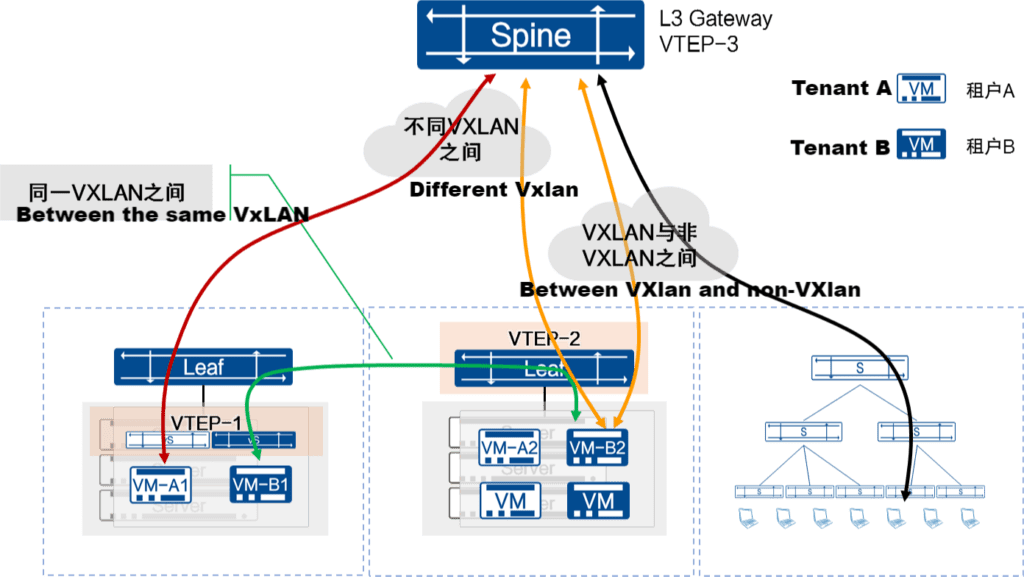
Layer 2 gateway: The same VXLAN VNI can communicate with different VTEPs, that is, tenants can communicate with each other on the Layer 2 network.
Layer 3 gateway: Layer 3 communication between different VXLAns or between VXLAN and non-VXLAN networks.
Each component of the VXLAN architecture plays an important role in the running of the VXLAN network.
Asterfusion SONiC based VXLAN and EVPN-VXLAN Solutions
Asterfusion self-develop SONiC NOS- AsterNOS fully supporting VXLAN & EVPN functions, while the development of features such as L2VXLAN, tunnel management, and EVPN within the SONiC community remains incomplete.
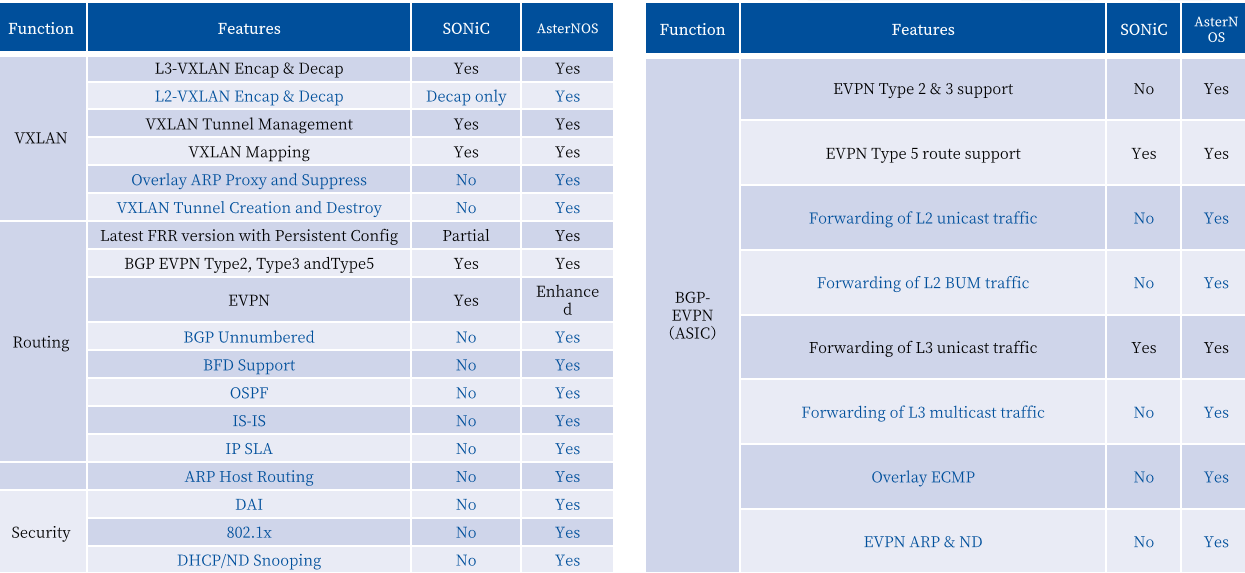
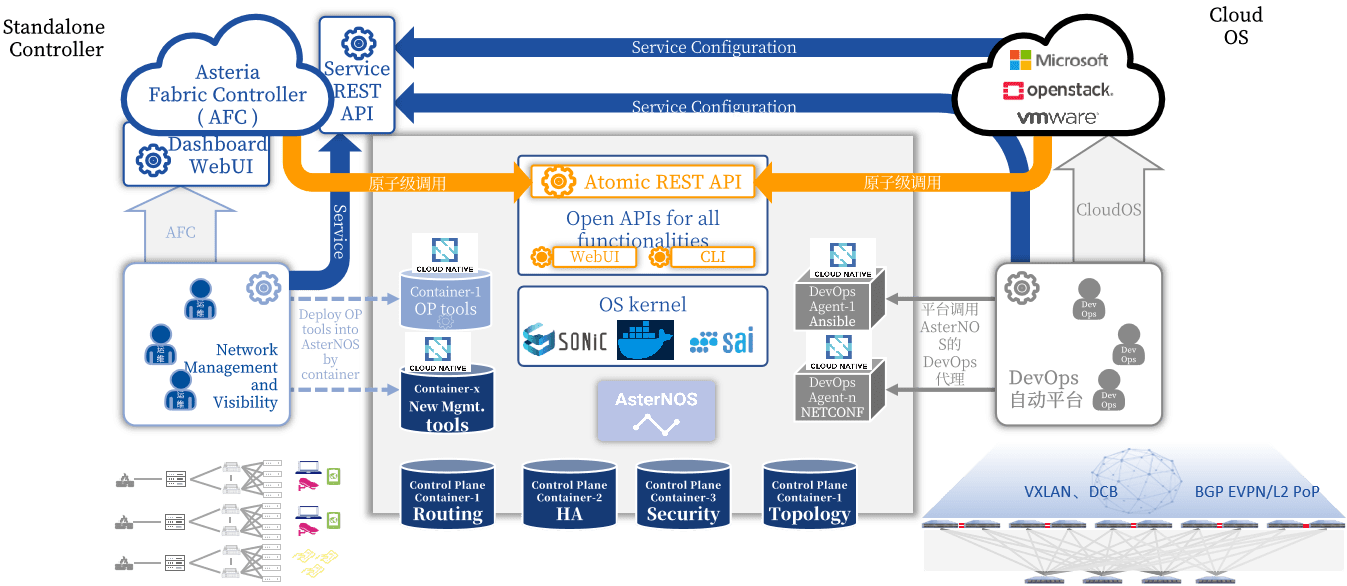
Building Data center Virtual Network based on SONiC based VXLAN Technology
Asterfusion CX-N low latency switches support EVPN-VXLAN and could used as VTEP gateways, encapsulating/decapsulating VXLAN packets, and routing between different VXLANs.
In addition to solving the three major challenges faced by data center networks, the “Asterfusion Switch + VXLAN” solution for building virtual networks has many other values:
1)To support VXLAN, only needs to enable the VTEP function on the switch. This solution is compatible with existing networks and realizes asset protection;
2)Asterfusion innovatively uses VLAN + Port to identify tenants, so that each interface of each switch can be connected to 4094 tenants in the server, and each switch can be connected to 4094 × port tenants, number of tenants increased by port times, therefore each Asterfusion switch has super tenant bearing capacity;
3)Asterfusion also supports multiple VXLAN gateway deployment modes, including centralized gateway deployment mode and distributed gateway deployment mode;
4)Offloading the VTEP function of the virtual network to the Asterfusion switch to ensure high performance network,etc.
Asterfsuion Offers the Most Cost Effective SONiC Vxlan Switches
VXLAN has become the best choice for SDN Overlay technology due to its simple data plane and good compatibility .If you are looking for a professional and cost-effective SONiC VXLAN switches for your data center, Asterfusion is a good choice.
Related Products
-
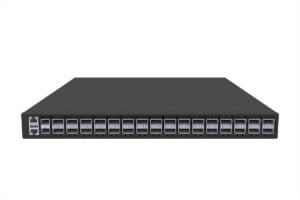 32-Port 400G QSFP-DD Low Latency AI/ML/Data Center Switch, Enterprise SONiC Ready,CX732Q-N
32-Port 400G QSFP-DD Low Latency AI/ML/Data Center Switch, Enterprise SONiC Ready,CX732Q-N -
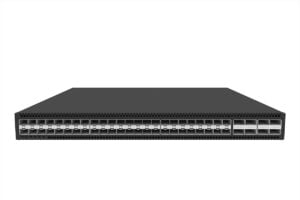 48-Port 25G Data Center Leaf (TOR) Switch with 8x100G Uplinks, SONiC Enterprise Ready, Marvell Falcon: CX308P-48Y-N
48-Port 25G Data Center Leaf (TOR) Switch with 8x100G Uplinks, SONiC Enterprise Ready, Marvell Falcon: CX308P-48Y-N -
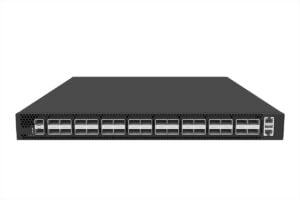 32-Port QSFP28 Low Latency Data Center Switch, Enterprise SONiC Ready, Marvell Teralynx: CX532P-N
32-Port QSFP28 Low Latency Data Center Switch, Enterprise SONiC Ready, Marvell Teralynx: CX532P-N
